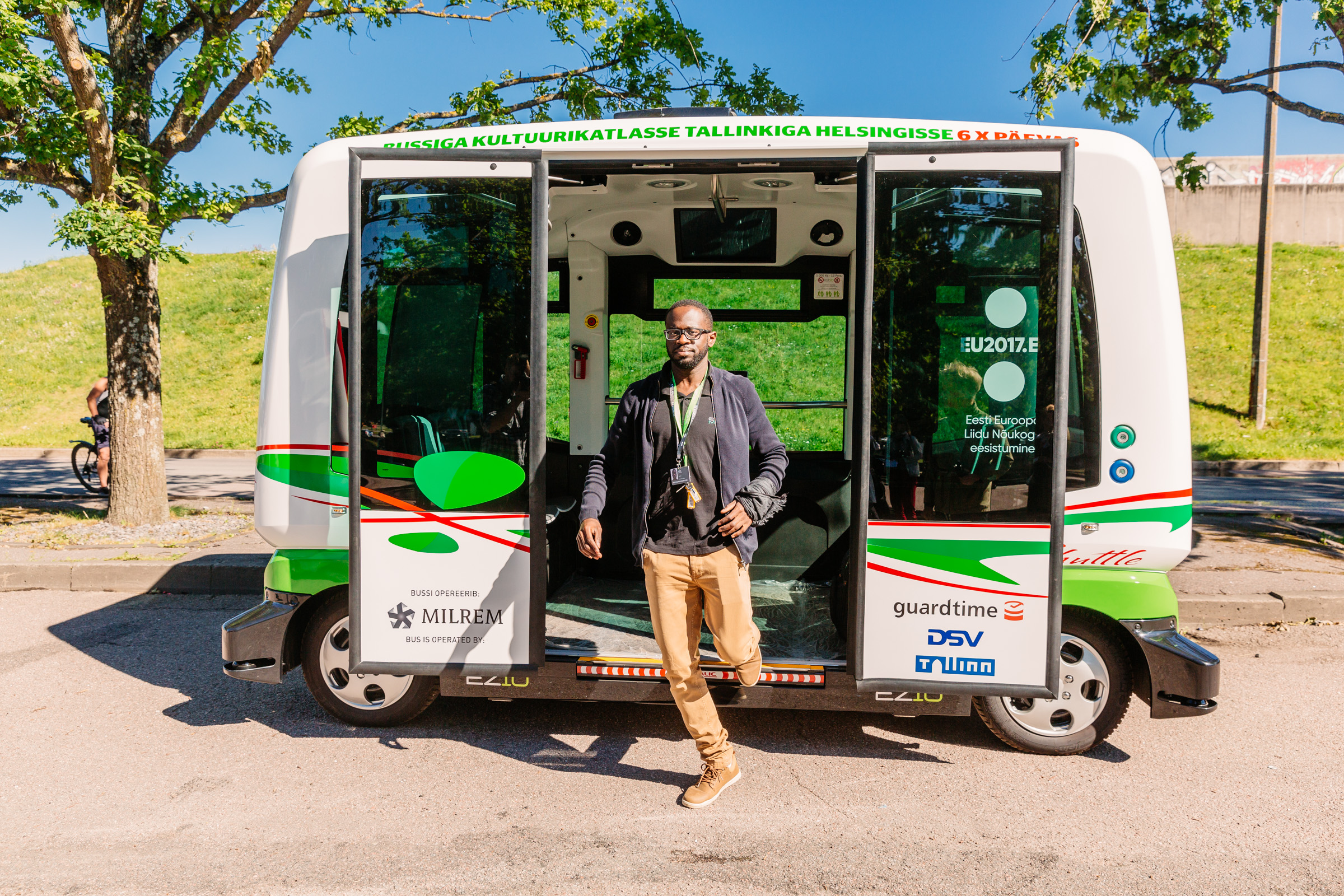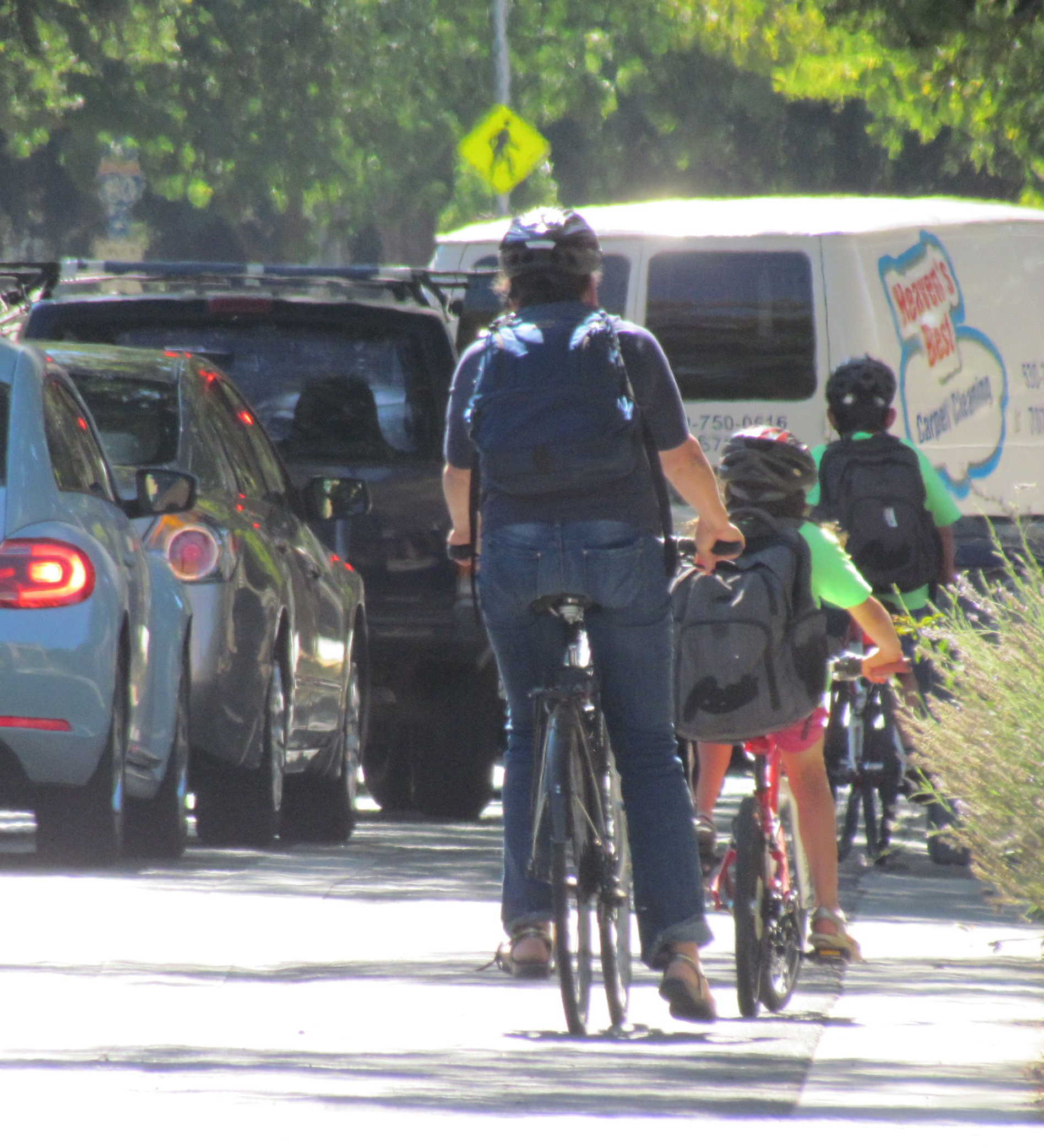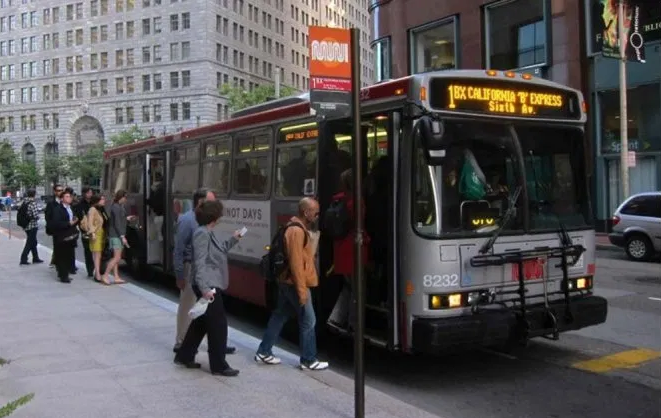Note: GJEL Accident Attorneys regularly sponsors coverage on Streetsblog San Francisco and Streetsblog California. Unless noted in the story, GJEL Accident Attorneys is not consulted for the content or editorial direction of the sponsored content.
Fully automated vehicles seem to be universally accepted as inevitable, but how they are deployed and how they will affect our lives is subject to debate. While proponents tout safety benefits, reduced need for parking, and freedom from the stress of dealing with congestion, others warn of increased congestion, decreased safety for people outside those cars, and potential health, economic, and mobility inequities as a result of widespread adoption.
It all depends on whether government agencies are willing to intervene to shape the outcomes, according to numerous recent studies.
One of those reports, recently produced by The Greenlining Institute, focuses on the equity implications of autonomous vehicles (AVs). Greenlining finds that optimistic scenarios won't happen unless government regulations ensure that the benefits of AVs are distributed fairly, so that those without means are not once again left with only disadvantages. Even then, says the report, AVs are "likely to increase economic inequality and place heavier burdens on low-income people of color while delivering less benefits to them, unless we proactively plan to address these issues."
The issues transportation policies need to address are: transportation and environmental injustices, growing economic inequity, technology that is outpacing regulation, and congestion, sprawl, and auto dependency. None of these will fix themselves.
The Greenlining Institute's focus is generally on bringing opportunity to historically disadvantaged communities, and transportation is key to accessing those opportunities. This report adds to recent work done at UC Davis and the Governor's Office of Planning and Research, focusing specifically on the questions of equity and equal access to these new technologies.
Hana Creger, Environmental Equity Program Manager for The Greenlining Institute and one of the authors of the report, told Streetsblog that at first she and her co-authors considered AVs to be outside of their focus area. But they noted how quickly ride-hail technologies changed the way that people travel, and realized that AVs could be another transportation revolution that could go very wrong.
"We need to get this right," she said. Self-driving vehicles are a "huge opportunity to reassess our relationship with cars and how we move," she said. They could ensure greater mobility for everyone--if done right.
The Greenlining Institute's report includes specific policy recommendations on improving mobility, and also examines potential health and economic impacts on marginalized communities. It looks in depth at who is likely to benefit, and who could be harmed, by this coming transportation revolution. It addresses potential impacts on public safety, health, climate change, jobs and job quality, and quality of life.
The impact on jobs, for example, could be enormous. "Automation is a huge threat for transportation jobs," said Creger. "It's already impacting the entire economy. We found frightening statistics that show AVs will especially affect marginalized groups with potential job loss--but what's also important is the quality of jobs, especially in a gig economy. People need proper wages and benefits."
That means carefully crafting policies to retrain displaced workers, but also preparing the future workforce for new jobs in an automated economy.
For AVs to truly meet their potential to increase mobility and safety, and to reduce transportation costs, said Creger, "we have to make sure AVs will support justice and sustainability as well."
The Greenlining Institute report outlines how that can happen: by making sure that autonomous vehicles are both electric and shared; that regulations discourage personal autonomous vehicles and promote affordability and access; and that the new industry promulgates fair labor practices.
How that sharing happens can take many forms, and can look different depending on location and geography. For example, in a city, autonomous trains and buses could serve large numbers of people. In suburbs, autonomous shuttle fleets that connect to transit hubs might make more sense. In rural areas, AV vehicles may only need to carry a few people.
The underlying message is that "we need to make sure everyone benefits," according to Creger.
She says that her experience test riding AVs shows huge potential safety benefits. But they are no magic bullet for safety or any other transportation problem. "In reality," said Creger, "it's infrastructure that is the root of the problem."
"We should be more scared that ninety percent of crashes are human error, and the leading cause of death for people. This is especially true in low-income communities, where lighting and infrastructure are lacking. These communities stand to benefit the most" from a safety revolution, she said.
"But what worries me is how humans will use the technology," she said. "Will they buy more cars? Will they produce more pollution, more driving?"
"AVs are almost a distraction from the real transportation revolution, which is putting people before cars. We want to shift the spotlight from vehicles to asking how we are doing transportation in the U.S. We have to harness and shape AVs to meet our needs, and to help create and support walkable and bikeable communities."
The Greenlining Institute's report was written for a wide audience, including decision makers, policy makers, researchers, government agencies, and the makers and operators of AVs, present and future.
"There's pages of recommendations on how to make vehicles more accessible to low-income people, people of color, the elderly, and people with disabilities," said Creger. "There are many more as well on how to maximize the health and economic opportunities of autonomous vehicles for marginalized people. It would be great if the manufacturers and operators would take initiative in making sure that the autonomous vehicle revolution is within reach to all people."
Companies designing AV tech will have to be intentional about reaching out to marginalized populations and engaging with them to make sure they're designing vehicles to reduce barriers for those with disabilities, people who lack a smartphone or high-speed internet access, or who do not speak English, she said.
"AVs shouldn't become mainstream just because they're a cool new technology; they should be solving real problems like unreliable mobility, pollution, and congestion," said Creger.
The Greenlining Institute's research focus on transportation injustice and economic inequality underpins this report. Low income people pay more for transportation than others, and communities of color suffer more from air pollution, much of it from vehicles. In addition, access to transportation has been found to be the greatest factor in being able to escape poverty, according to Creger.
AVs could be a huge game changer. "There is a huge opportunity for electric, shared vehicles that are accessible to all people," said Creger.
That is, if policy can get out ahead of the technology.





